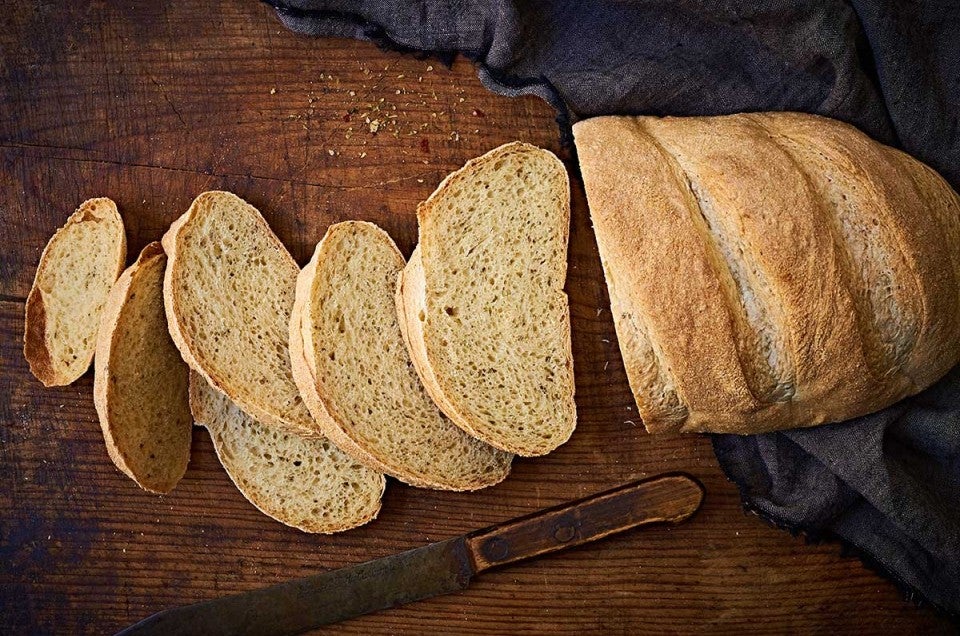


There are really only four things you need to make bread: flour, water, yeast, and salt. The reason for the first three ingredients is pretty obvious — of course you need flour and water to form a dough, and then yeast to make it rise.
But when it comes to salt ... it’s not always clear just why exactly it’s there.
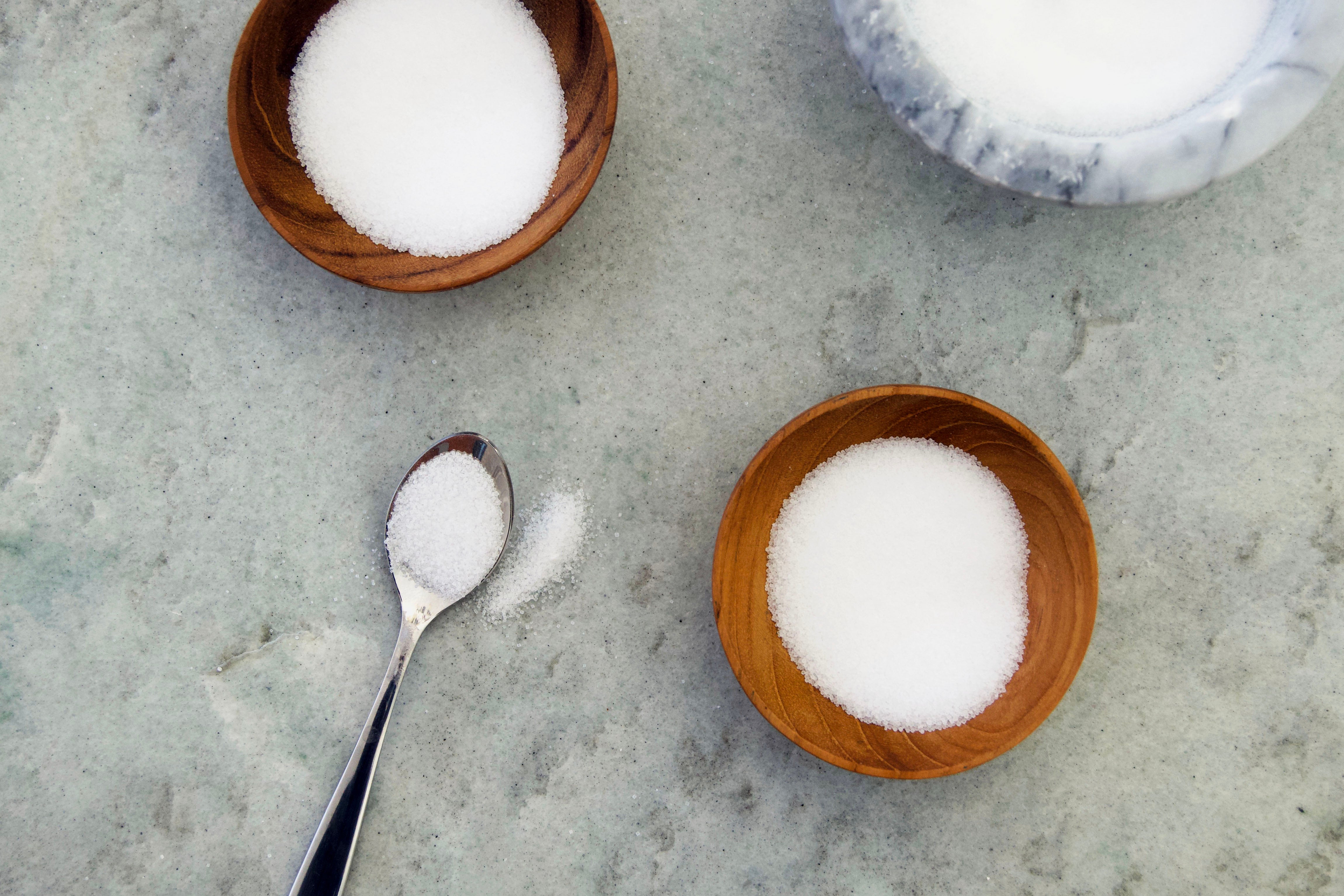
Salt, as it turns out, doesn’t just play one role in making bread. It plays several roles, each necessary for baking a successful loaf with great taste and texture.
Salt has four important functions in bread, all the way from kneading to eating. Most crucially, it:
Let’s dive into each of these factors a bit further to fully understand the importance of salt in baking yeast bread.
Salt acts as a yeast inhibitor, which means that it slows down the growth and reproduction of yeast in your bread dough. Without salt present to rein in its activity, the yeast will go wild eating all of the sugar available in the dough from enzymatic activity, like an overactive Pac-Man machine. Adding salt prevents the yeast from reproducing too quickly, thus allowing you to control the rate at which the dough ferments.
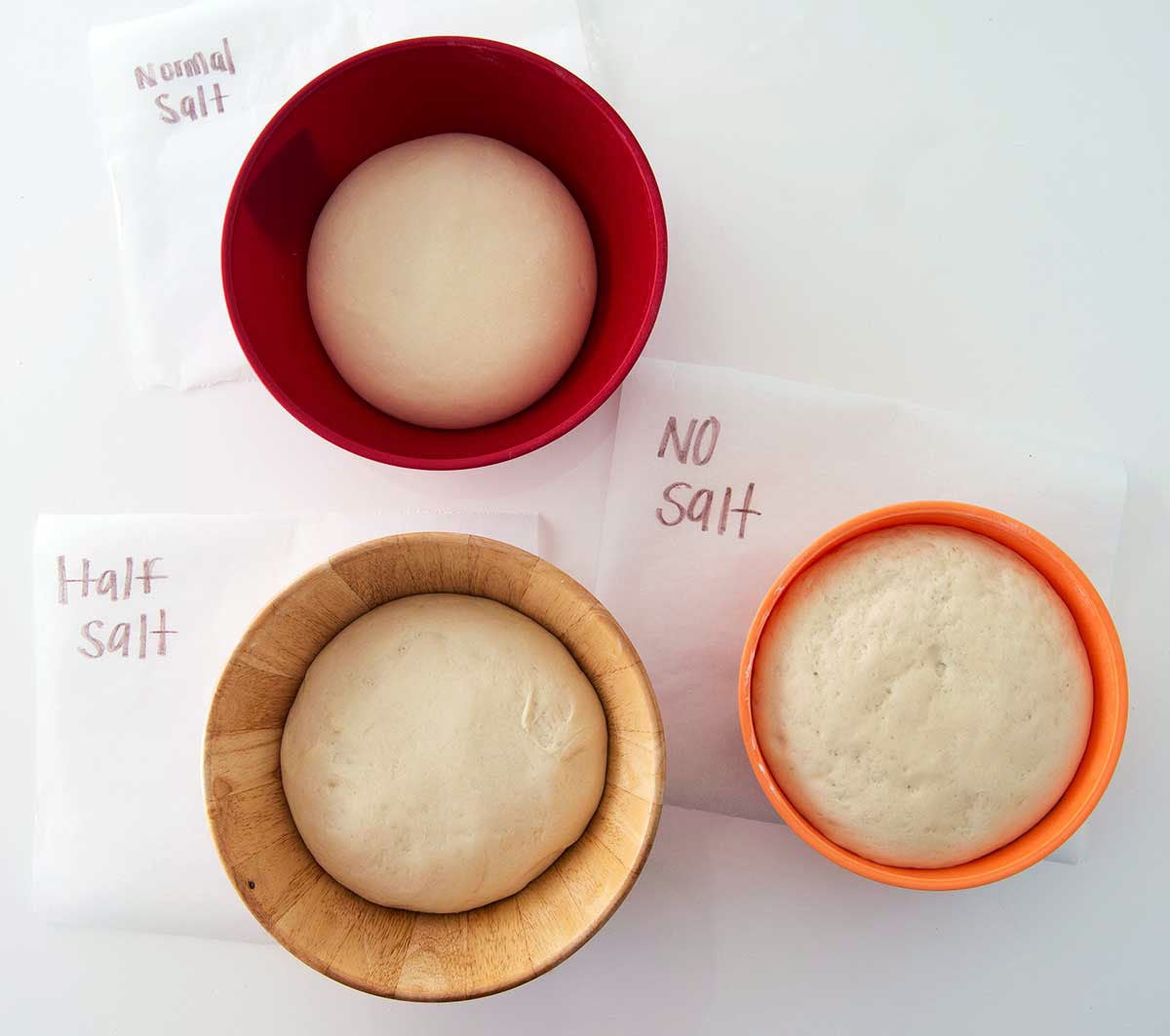
If you bake bread without salt, you may notice the dough rising much more quickly than normal during the proofing stage. This is because the yeast is able to run wild without salt to slow down and control it. This might seem like a good thing — more proofing means lighter, fluffier bread! — but such rampant overactivity actually just results in a sticky dough that’s difficult to work with and is more likely to collapse. What's more, the longer the yeast has to do its work (i.e., the slower the pace of fermentation), the more flavor notes are created in the bread, resulting in better overall taste in your final loaf.
When added to bread dough, salt works to tighten the gluten strands that are formed, which makes them stronger. By strengthening these gluten strands, salt enables the dough to hold carbon dioxide more efficiently.
OK, so why is this a big deal? This ability is important because carbon dioxide is a byproduct of the fermentation occurring. If the gluten strands aren’t strong, the dough isn’t able to hold the carbon dioxide well; as a result, the dough ends up super slack.
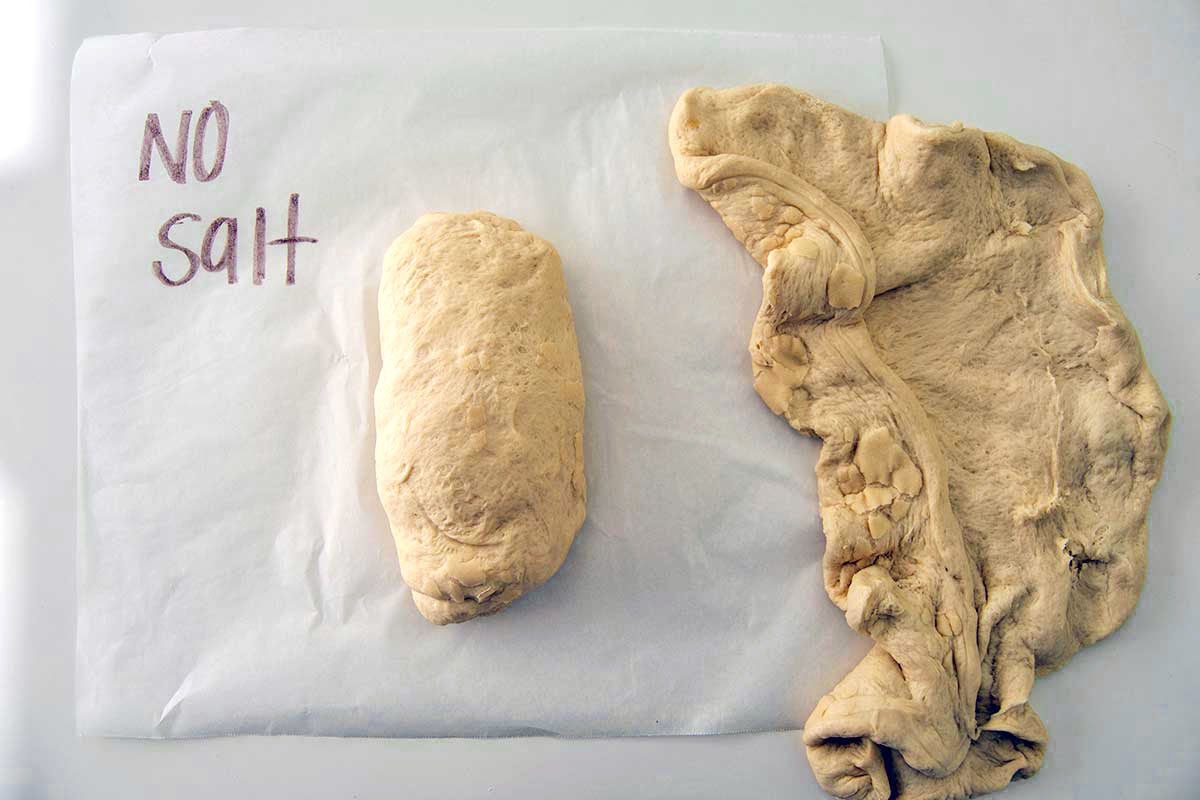
As a result, it’s very difficult to shape, and the resulting bread has poor volume. When I tried to form one of my salt-less bread doughs into a loaf to bake, the dough was slack and all over the place; it could barely hold its shape, and I struggled to form it into a cohesive loaf. Definitely not ideal!
Bread gets its crust color from residual sugar in the dough, which is present after starch in the flour is converted into simple sugars by the amylase enzymes. While the bread is baking, the residual sugar on the outside caramelizes, yielding color to the crust.
But if there’s no salt to curtail yeast activity, the yeast will have a field day eating up all of that residual sugar in the dough. Without this sugar to caramelize during baking, the bread’s crust will end up pale and dull, instead of the deeply browned ideal we all love.
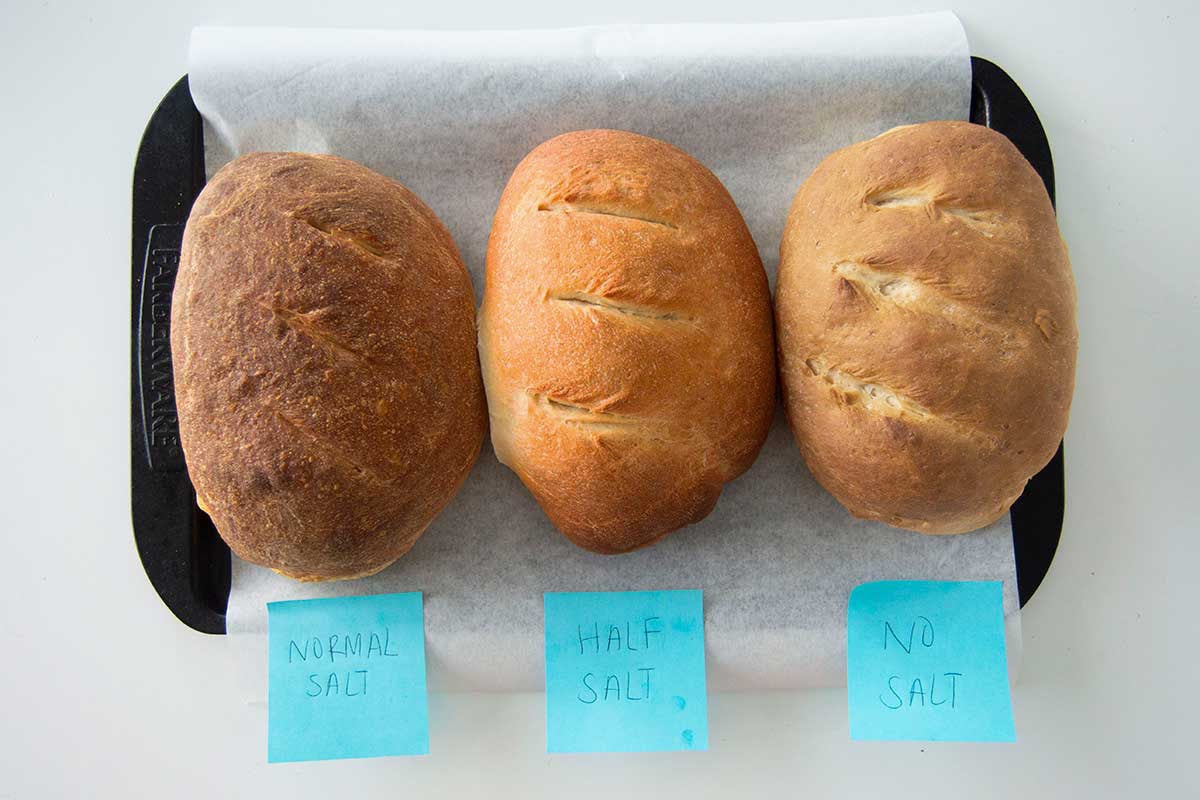
The takeaway? It’s important to have salt to slow down the rate at which the yeast consumes residual sugar, leaving some sugar present for baking to create a beautifully browned crust.
As with almost everything we eat, salt imparts bread with flavor. If you’ve ever tried bread without salt, you’ll know that it tastes bland and flavorless (ugh). And unless you’re used to eating no-salt foods, it’s not very appetizing. In fact, it almost tastes like there’s a crucial element missing (because, of course, there is!).
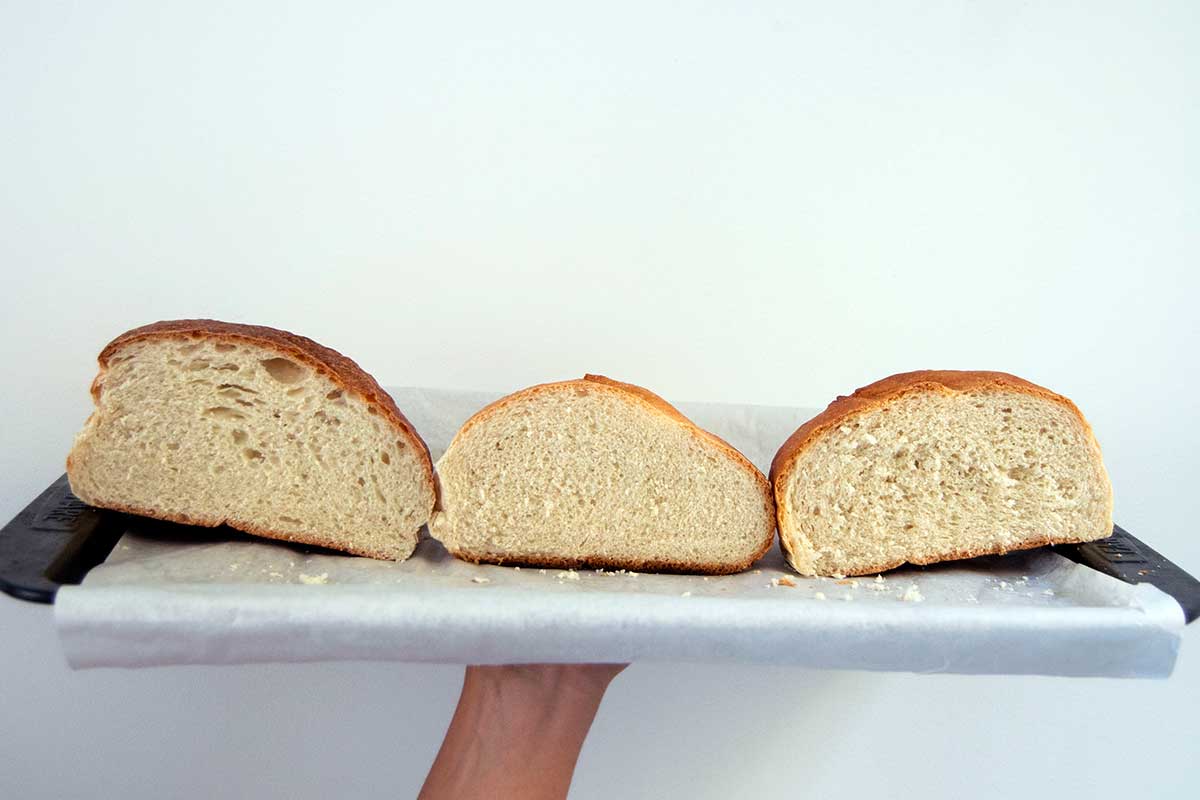
Now that you know how crucial salt is to successful bread baking, it makes sense why these mundane little white crystals are one of the four foundational ingredients in bread. But what if you want to make bread without any salt at all?
If for any reason you’re trying to eat less salt, you may be interested in limiting the amount you use in your bread. It’s not impossible, but you’ll need to be careful before making any adjustments.
Salt is added to bread dough at approximately 1.8 to 2% of the weight of flour. Sticking to this percentage ensures there is enough salt present in the dough to do its very important job. Once you start to decrease that amount, the quality of your bread starts to decline as well.

Generally, we advise bakers to not leave out salt entirely when making bread. Not only will your dough be slack and difficult to work with (the worst!), but the baked loaf will turn out bland and flavorless.
The good news is, the amount of salt in the average slice of bread is actually very small, so it's generally worth it to stick to the measurement called for in a recipe. If you're still looking to reduce the salt in your bread, however, it's possible to do so successfully (to an extent).
Generally, you can reduce the salt by half without having any very noticeable changes to texture and browning.
If your bread tastes a bit bland, you can use herbs or spices to increase the flavor. Fresh chopped rosemary or caraway seeds are both very traditional ways to add flavor, but the options are really endless! Try experimenting with blends like Herbes De Provence or even Pizza Seasoning to jazz things up.
You can usually reduce the salt in your bread by half without having any very noticeable changes. Add flavor by incorporating herbs and spices into your loaf.
If you’d like to make bread without any salt at all, we’ve got one unique loaf to the rescue: Tuscan Bread (Pane Toscano), also pictured at the top of this post. Because this Tuscan bread is traditionally eaten with salty meats and cheeses, the recipe is actually written to be salt-less to begin with. A baker’s miracle!
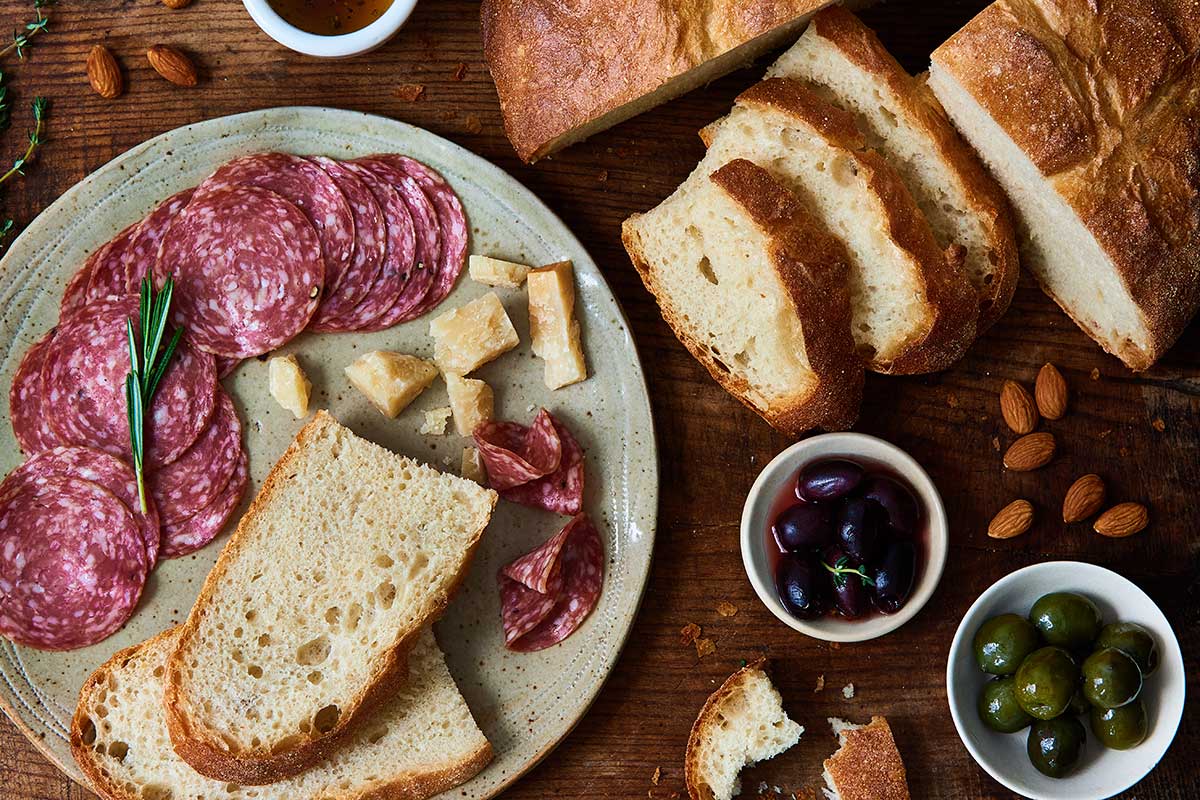
To ensure success, the recipe incorporates some necessary tweaks in order to accommodate the lack of salt. For instance, the shaping of the dough is very minimal, so you don’t have to worry about a floppy mess. In addition, the dough is misted with water while baking to help achieve a pleasingly browned crust, no salt required.
You should also know that the resulting loaf is rather bland, so as not to compete with the strongly flavored foods it's usually paired with. As a result, we suggest serving it alongside a hearty stew or topping with olive oil and crushed garlic. Ultimately, think of it as a super blank canvas to let all sorts of other flavors shine.
And if you'd like to experiment further with salt in your bread baking, our Everyday Bread collection makes an excellent place to start!